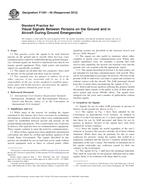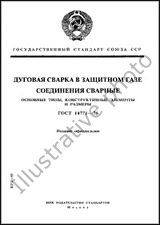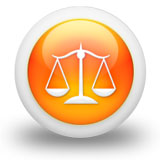We need your consent to use the individual data so that you can see information about your interests, among other things. Click "OK" to give your consent.
ASTM F1591-95(2012)
Standard Practice for Visual Signals Between Persons on the Ground and in Aircraft During Ground Emergencies
STANDARD published on 1.5.2012
The information about the standard:
Designation standards: ASTM F1591-95(2012)
Note: WITHDRAWN
Publication date standards: 1.5.2012
SKU: NS-50846
The number of pages: 3
Approximate weight : 9 g (0.02 lbs)
Country: American technical standard
Category: Technical standards ASTM
The category - similar standards:
Annotation of standard text ASTM F1591-95(2012) :
Keywords:
aircraft, communications, distress, emergencies, ground, search, signals, visual , Aircraft materials/applications (EMS), Communications (medical applications), Distress, Emergencies, Ground-to-air body signals, SAR (search and rescue) operations, Signals, Visual communications/signals, ICS Number Code 03.220.50 (Air transport)
Additional information
| Significance and Use | ||
|
While many of the reasons for needing the signals contained in this practice have been overcome by technology development, situations still arise where voice communications cannot be established between aircraft and persons on the ground during emergencies. This is particularly true of persons in distress, who typically have no communications equipment. These signals continue to meet the need for communications. Most of these signals have been adopted by international convention, the others by civilian and military agencies of the United States Government. The signals described in this practice are intended for use on land and can be made without special equipment such as flares or colored panels. Other signaling systems are described in the National Search and Rescue (SAR) Manual. The signals are also useful in situations where either complete or partial voice communications exist. Where only partial capabilities exist, for example, a ground unit with receive-only capability, the aircrew can transmit voice and the ground crew can respond with the appropriate signal. The signals described in Section 4, by their nature, are not intended for real-time communications with aircraft. They can be left unattended as messages for aircrews. Persons on the ground (SAR or otherwise) can make a signal and continue on without contact with the aircraft. The SAR personnel should keep this in mind when encountering the signals of Fig. 1. Search and rescue agencies utilizing this practice should disseminate these signals to the public as part of their preventative search and rescue (PSAR) efforts. The signals have changed over the years and a number of publications contain obsolete signals.
|
||
| 1. Scope | ||
|
1.1 This practice covers the signals to be used between persons on the ground and in aircraft when two-way voice communications cannot be established during ground emergencies. Ground signals are limited to land-based ones that do not require special equipment. Flare, light, panel, and maritime signals are specifically excluded. 1.2 The signals are divided into two categories: those used by persons on the ground and those used by aircraft. 1.3 This standard does not purport to address all of the safety concerns, if any, associated with its use. It is the responsibility of the user of this standard to establish appropriate safety and health practices and determine the applicability of regulatory limitations prior to use. |
||
| 2. Referenced Documents | ||
|
Similar standards:
1.4.2011
WITHDRAWN
1.7.2012
1.7.2012
1.6.2012
1.6.2012
1.6.2012
We recommend:
Updating of laws
Do you want to be sure about the validity of used regulations?
We offer you a solution so that you could use valid and updated legislative regulations.
Would you like to get more information? Look at this page.



 GOST R 54080-2010..
GOST R 54080-2010..
 Cookies
Cookies
